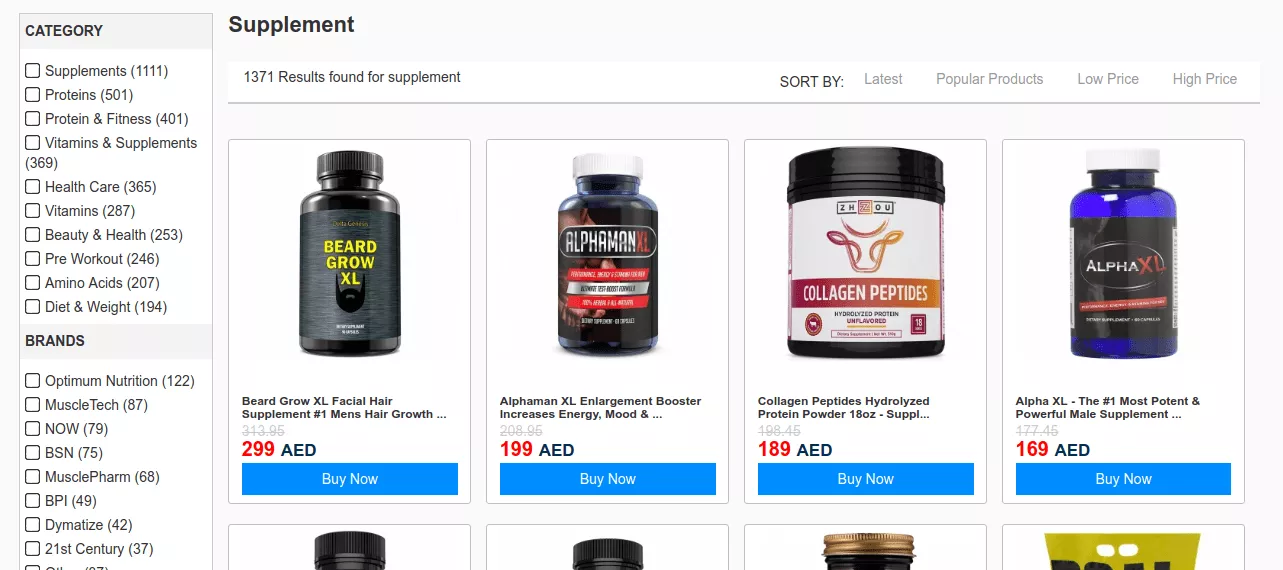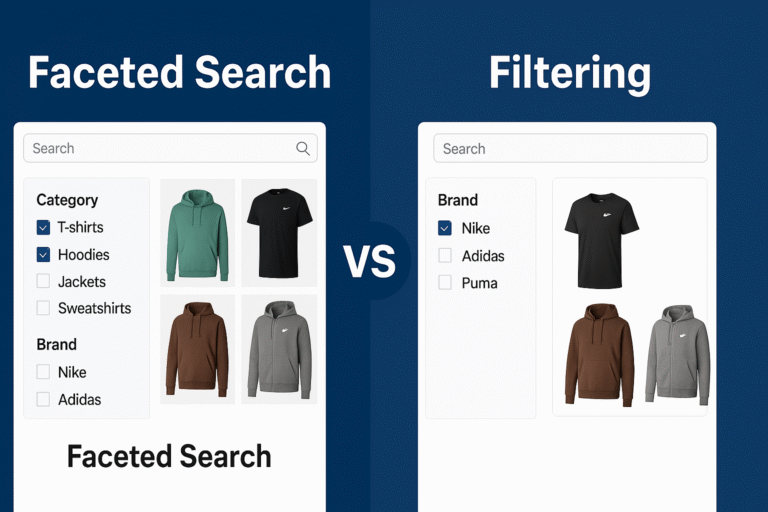Read Ecommerce search by Expertrec for more information.
In any eCommerce website, there is no one tool that is more important than the search bar that helps in sales. The real truth is that many eCommerce websites have been trying to get the secret sauce that drives great search experiences on Google. But hardly few eCommerce websites (including Amazon) have been able to get their search to Google’s level. Statistics have shown a high correlation between people who search and people who buy. This gives a great reason to optimize your eCommerce search engine. To be concise, the search bar is the eye of an eCommerce website.

How to build an e-commerce search engine that sells?
Why do more people choose to advertise on Google as compared to Bing? Two reasons – One- Advertisers are able to sell products much better on Google than on Bing. Two – More people use Google.
Both these reasons are undoubtedly related to the fact that Google’s search results are more relevant. To sell more, the number one search feature to concentrate on is the search relevance.
Before we dive into advanced search features, let’s have a look at the basic search components.
The first step before venturing out to build an eCommerce search engine is to have a product feed. A product feed has details about a product such as product name, description, price, category, in stock or Out of stock, product image, thumbnail. It is desirable that this product feed is available in JSON and XML format and is available as a real-time endpoint. This will be helpful in syncing with the search engine in real-time.
The search autocomplete (also known as autosuggest) is a pretty basic and a popular search feature that reduces the number of letters entered into the search bar before hitting on a product match. If a customer has entered “s” into the search bar, the autocomplete function will suggest Samsung and similar products. If in case you have turned off the search autocomplete feature, please do a favor to your customers and turn it on. Also, try to incorporate some learning from user behavior into the autocomplete algorithm in order to reorder the autocomplete suggestions based on popularity for a given search query.
The majority of your site search visitors make spelling errors while searching for a product. When you pull out your search terms data, you will find that even the simplest of products have attracted spelling errors from customers. If you haven’t enabled spell correct, you risk losing a potential customer.
Another important feature is the search user interface. The search interface has to be visible and prominent, it should work well across devices. Front end improvements such as recent trends and popular search queries can help in improving the search experience.
The next important search feature is the search results page. The search results page has more features such as sort by functionalities such as sort by price, relevance functionalities. The price and category filters in the search results page are very important in helping users narrow down to the correct product they are looking for. A price range filter and filter for reviews will also help in helping users find better products on your eCommerce store.
Pagination is another useful feature helping users to move to the next pages of search results. In recent years, websites have implemented infinite scroll to replace pagination where the next page of search results load on a scroll event which gives the effect of products loading infinitely.
In many eCommerce websites, natural language search queries are on the rise. If your search engine can’t handle natural language searches, people will switch to Google to search for such queries which means losing out customers to competitors. Adopting machine learning practices in ranking search results can help in handling NLP queries.
Your site search might benefit in the long run if you have a search rule engine. When you have a rule engine built, the next time you want to make changes to your search engine relevance, you need not return back to coding. A rule engine helps in promoting products to the top of search results for certain queries alone based on rules set by the administrator. This is beneficial in improving revenue and profits. For example for a top-performing search query, you might want to boost certain products that have a higher margin.
Synonyms can help in handling NLP queries and other queries that don’t have a product match. For example, if people are searching for couch and you have sofas listed in your product feed, you can set “sofa” as a synonym for “couch” which will bring in sofas when someone searches for couch.
A URL redirect takes people to a non-product detail page when someone searches. For example, if someone searches for “returns”, instead of showing people to products related to returns, you can redirect them to the product returns page.
Site search performance tracking is a must for any eCommerce website. Google analytics has a great site search tracking tool. All you have to do is mention your search query parameter and enabled eCommerce tracking to get started. Since Google Analytics doesn’t give complete data, you can build out your own analytics tool based on your business needs.
A search landing page editor where you can create multiple landing pages easily by dragging and dropping products can help you in SEO and improving your organic traffic and also send targeted traffic from your ad campaigns.
If you have a product feed, you can create your own eCommerce search engine in 5 minutes from here.




